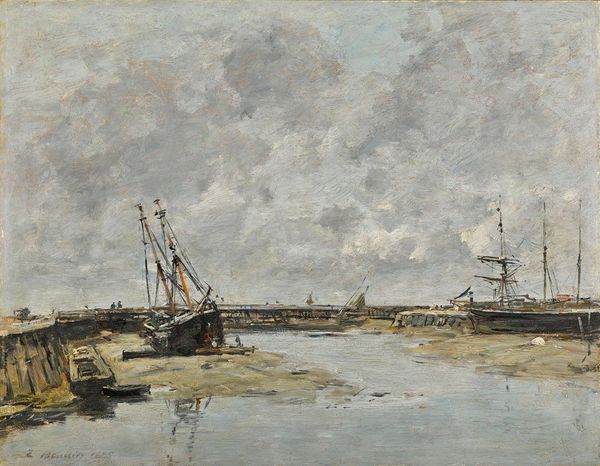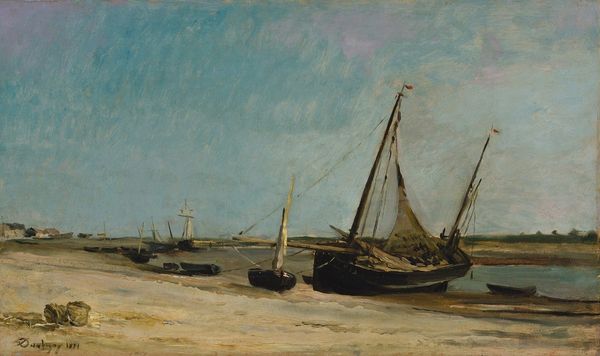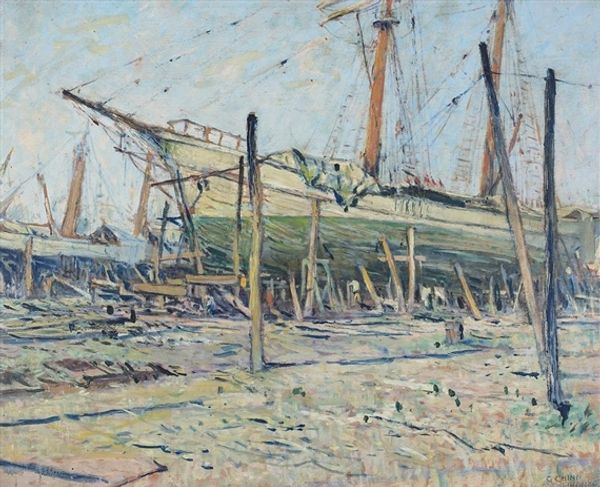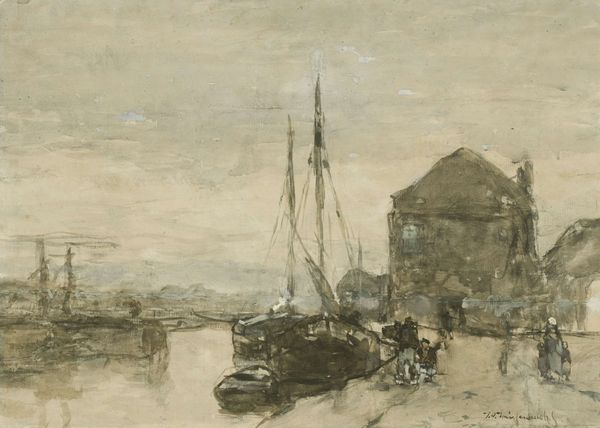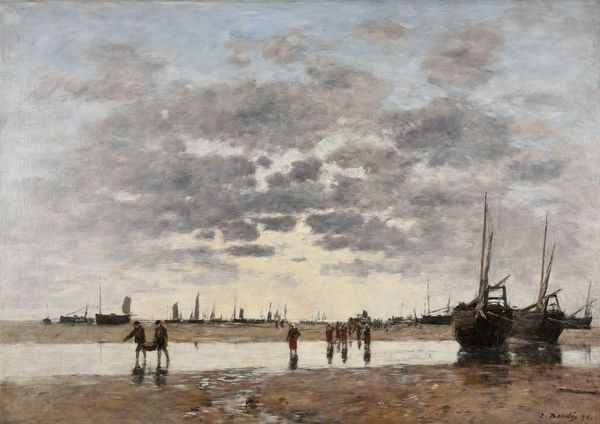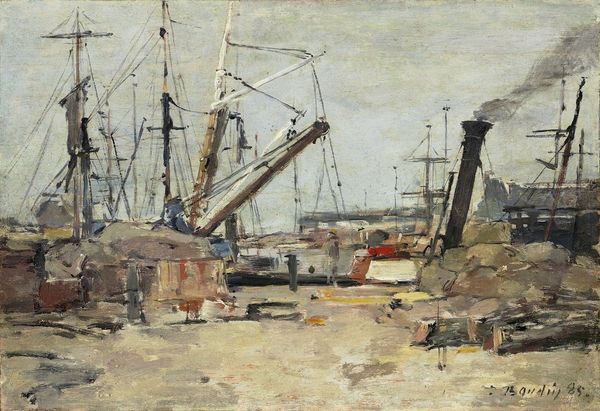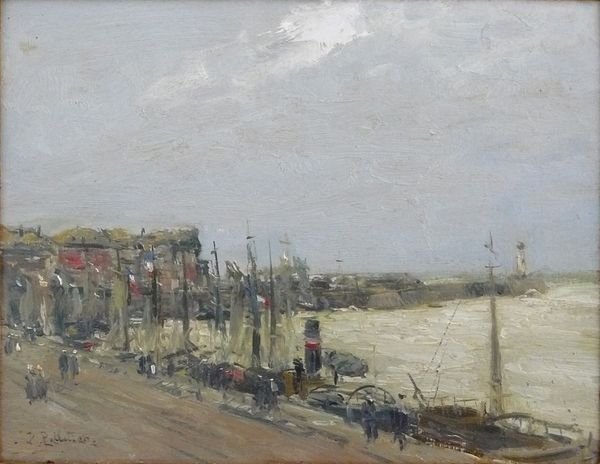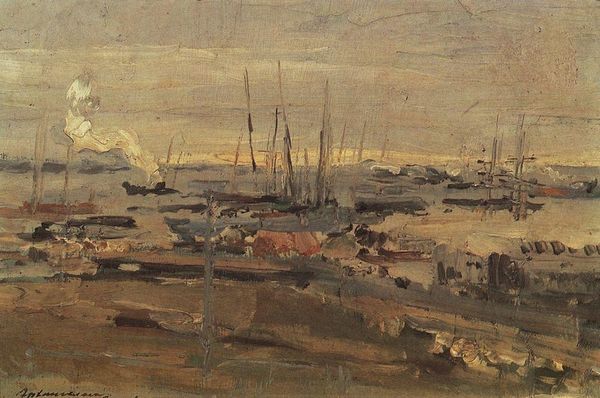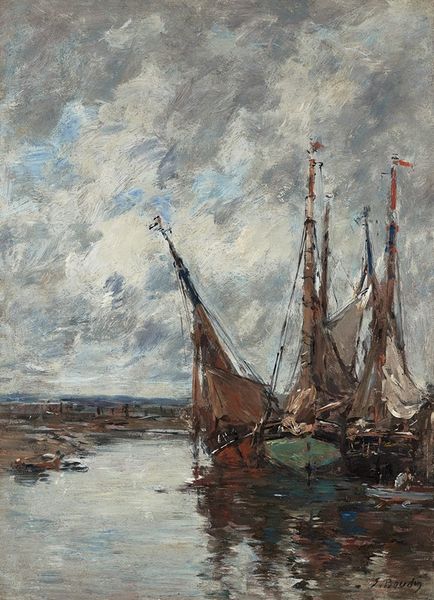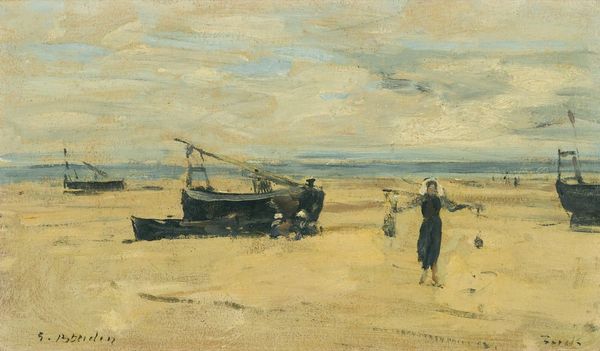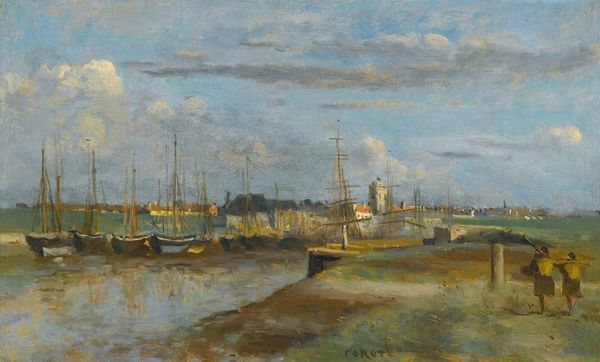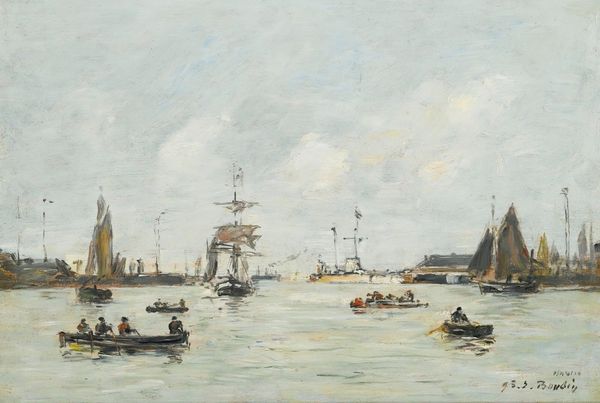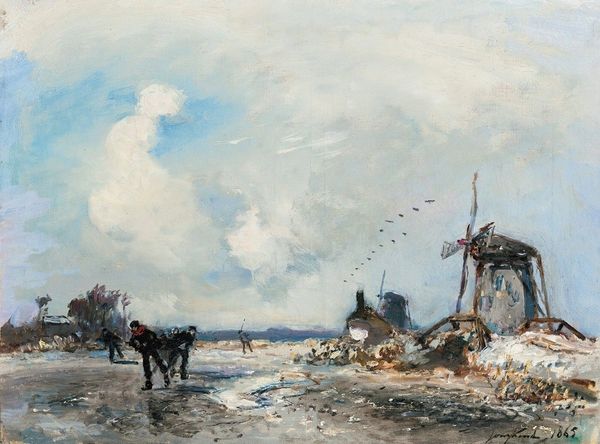
#
abstract painting
#
abandoned
#
landscape
#
impressionist landscape
#
possibly oil pastel
#
oil painting
#
acrylic on canvas
#
underpainting
#
painting painterly
#
mixed medium
#
watercolor
Copyright: Public Domain: Artvee
Curator: Here we have Eugène Boudin's "Rivage De Berk, Marée Basse," dating from around 1880 to 1885. This artwork presents a captivating view of a beach scene. What strikes you immediately about it? Editor: It feels wonderfully melancholic, almost a wistful memory of a day at the seaside. The colours are muted, but full of movement. You can practically smell the sea air, mixed with a touch of something bittersweet, don’t you think? Curator: Absolutely. Boudin was, after all, one of the first French artists to paint plein air, directly from nature, striving to capture the fleeting effects of light and atmosphere. It's worth remembering that he directly influenced Monet's early development as a landscape painter. The low tide shown could signify a time of transition or the ebb and flow of daily coastal life, tied closely to labour practices of 19th century fishing towns. Editor: Makes me think about impermanence too—the tides turning, boats coming and going, and people’s lives interwoven with these natural cycles. There's a humble labourer pulling nets on the left, small as an afterthought...it seems like everyone and everything in the painting are subject to the relentless movement of the sea and sky. What stories are held in those hulls, eh? Curator: That resonates deeply. Considering its time, paintings like this engaged with new understandings of nature shaped by growing industrialization. The availability of manufactured pigments, and changing social perspectives on leisure, all fuelled art like this. How do you think gender plays a part in this kind of scene, knowing that these spaces of seaside leisure became heavily gendered? Editor: Hmm, good question. Looking closer, you almost feel a distinct lack of what we might consider a “feminine” presence – the labour feels masculine, rugged...the absenting of women emphasizes the daily toil and industry. Which speaks to the selective romanticism perhaps applied in the artistic eye to such scenes. Curator: Precisely. The composition, colour palette, the inclusion or exclusion of different actors...all point to what stories are uplifted and which are sidelined. Thank you, it’s amazing to consider how those subtle choices change the historical significance of this seemingly placid image. Editor: Yeah, those "little beaches of the world", as Baudelaire would say, really held some complicated social stuff! I’m just captivated now, the tide really has turned.
Comments
No comments
Be the first to comment and join the conversation on the ultimate creative platform.
